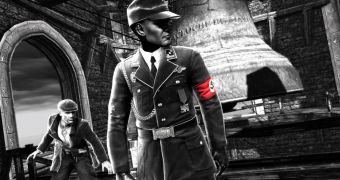When Pandemic announced that it was creating another World War II shooter, a lot of people were unimpressed, as the genre is already overcrowded. Since then, it has revealed some details that make Saboteur interesting and worthy of a second look. One aspect is the way in which it tries to reconcile history with the need to create an engaging videogaming experience.
Thomas French, who is a producer on the game for Pandemic, stated that “We don’t even really think of our game as a WWII game, it’s the backdrop to our game which gives us arguably the best real world bad guys of all time. Our game is big, over the top, and filled with lots of high action. Mechanically we’re so different from those games too and the 'kitchen sink' of tools we have for the player make for something that’s even different in just the sandbox genre as well. It’s also got a different world than people are used to seeing in this time period, full of grit, personal stories, and real characters.”
One controversial decision has been not to tie historical dates to any of the events in the game in order not to pressure the player into doing one thing or the other. The sandbox nature of Saboteur demanded as much freedom as possible, which can only be achieved by eliminating all the possible constraints on the actions of the player. In no way is the adventure a historical one, as the enemies faced and arsenal used are over the top and spectacular and not necessarily based on real life events.
The main selling point for Saboteur until now has been the “will to fight” mechanics, which tracks the progress of the player while also offering them a clear incentive to take missions and complete as much as possible of the game. The Paris the game is set in is originally black and white only, color returning as the inhabitants get back their will to fight the occupying Nazis.

 14 DAY TRIAL //
14 DAY TRIAL //